In Wellington, at least 1500 people dance barefoot in concentric circles to loud music and live singing, profusely sweating in elaborate outfits until 1am.
It might sound like a sensory nightmare but this is garba, an energetic social dance that is performed in large groups across the nine-day Hindu festival of Navaratri.
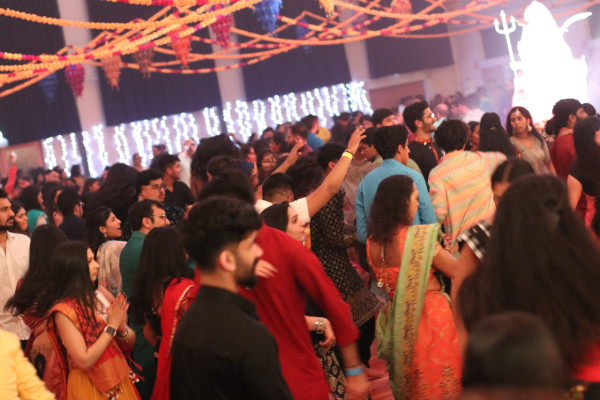
People doing garba at Bharat Bhavan in Wellington, with the Durga idol in the background. Image: Re: News.
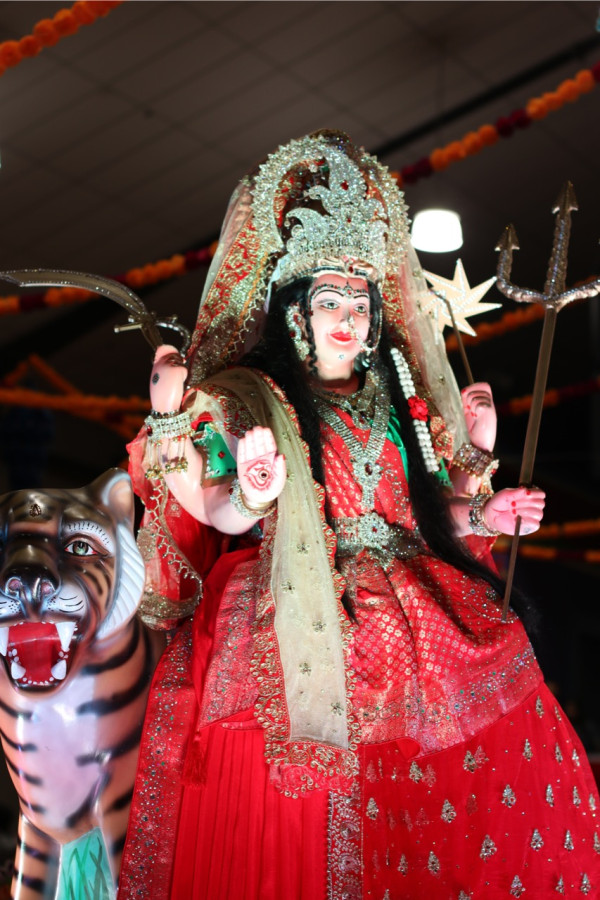
The idol of the goddess Durga at Bharat Bhavan in Wellington. Image: Re: News.
Navaratri is a major festival that honours the divine feminine and is held annually during the September to October period, depending on the Hindu calendar.
Garba comes from the state of Gujarat but the dance has been popularised all over India and the diaspora, and is usually performed in circles around an idol of the goddess Durga.
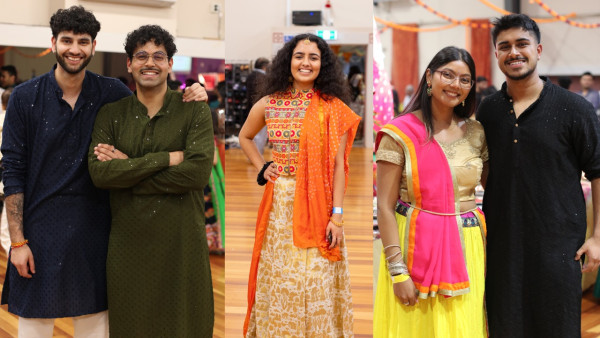
Young Indian New Zealanders decked out for garba. Image: Re: News.
As someone who has attended garba every year since I was a child, my favourite part is seeing what outfits everyone will wear and figuring out which ones I want to show off myself.
I went along to Bharat Bhavan, a temple in Wellington, last Saturday to speak to young Indian New Zealanders about what they wore to garba this year.
Ameesha (left) and Shyla (right)
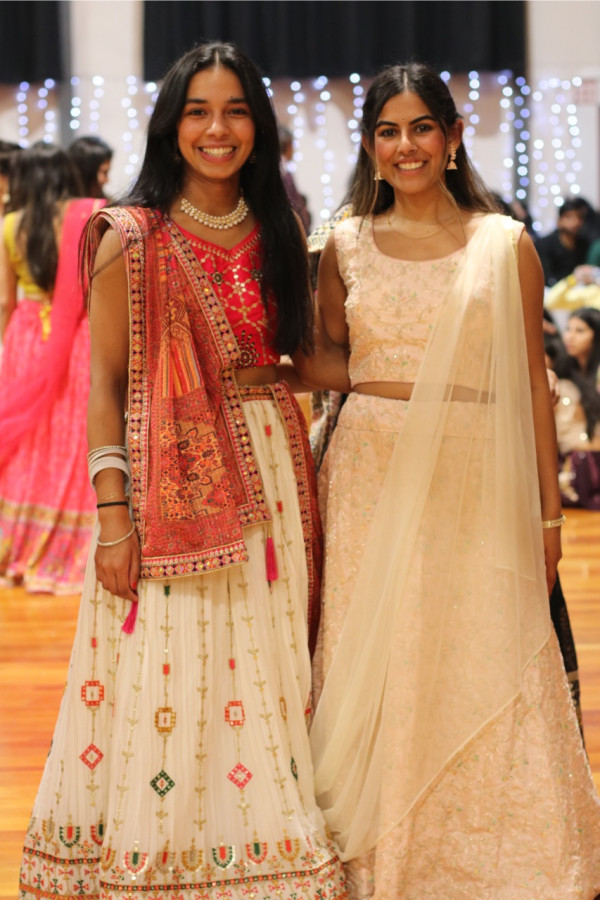
Image: Re: News.
Ameesha Patel and Shyla Chhika became friends after meeting each other through garba around eight years ago.
Shyla’s outfit is from Navsari, Gujarat and she says “the price was definitely under $50, I got it at a cheap place and we just got it tailored”.
While some Indians stock up on traditional clothes when they visit India, Shyla says she’s only had that opportunity once.
She says she would now rather sell a piece before buying a new one, especially because styles change over time.
Shyla estimates she wears a garba outfit three to four times on average, “depending if it still fits me and if it's in season and if I like it, because I get bored sometimes too and I want a new style of dress”.
Bhakti (left) and Dharmik (right)
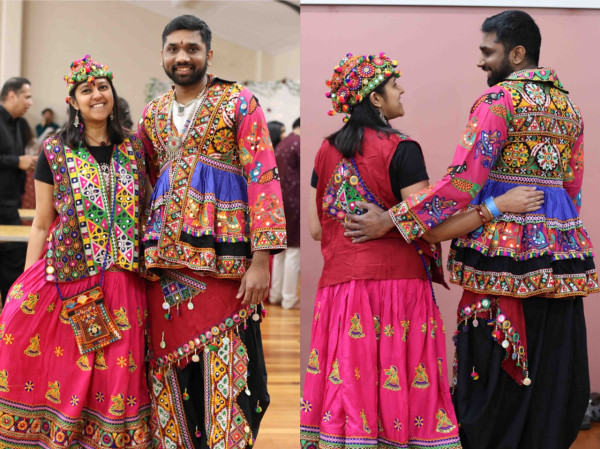
Image: Re: News.
Bhakti Todi, 29, came to New Zealand five years ago from Mumbai and her husband Dharmik Mardiya, 33, is from Gujarat and has lived in New Zealand for 10 years.
Dharmik’s parents gifted the couple these outfits, with Bhakti’s costing around $100 and Dharmik’s costing around $140.
They got them from Ahmedabad, the largest city in Gujarat, where Bhakti says there is a huge variety of garba outfits.
This particular style of traditional clothing is called kediyu and Dharmik says it is really comfortable and is authentically hand-embroidered by old Gujarati artisans.
“We are going to do lots of dance so we make sure it's comfortable, we want to be able to use our hands,” Bhakti says.
Tejal (left) and Tulip (right)
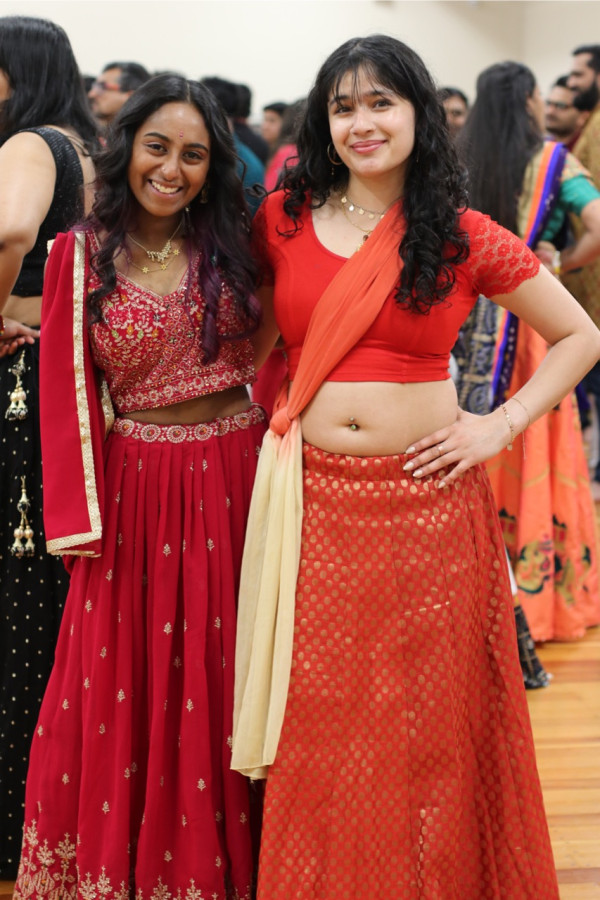
Image: Re: News.
Tulip Kumar, 18, was born in New Zealand and loves to “reduce, reuse, recycle”.
“I wear the same outfit every year because I can’t afford to buy outfits in New Zealand and when I go to India, it weighs too much so I can’t buy any in India.
“So I’ve got the basics and I just change the top once in a while, change the dupatta once in a while.”
Tejal Kala, 23, is a third generation Indian New Zealander on her dad’s side while her mum moved to New Zealand for university.
She says her masi (aunty) and masa (uncle) went to India last year so they were lucky enough to get new clothes from them, including the outfit she’s wearing.
“They’ll take our measurements usually when they go,” Tejal says.
“Mine’s actually my sisters because I recycle the same three outfits every single year but this is my first time wearing her outfit which is really cool.”
Smita (left) and Amisha (right)
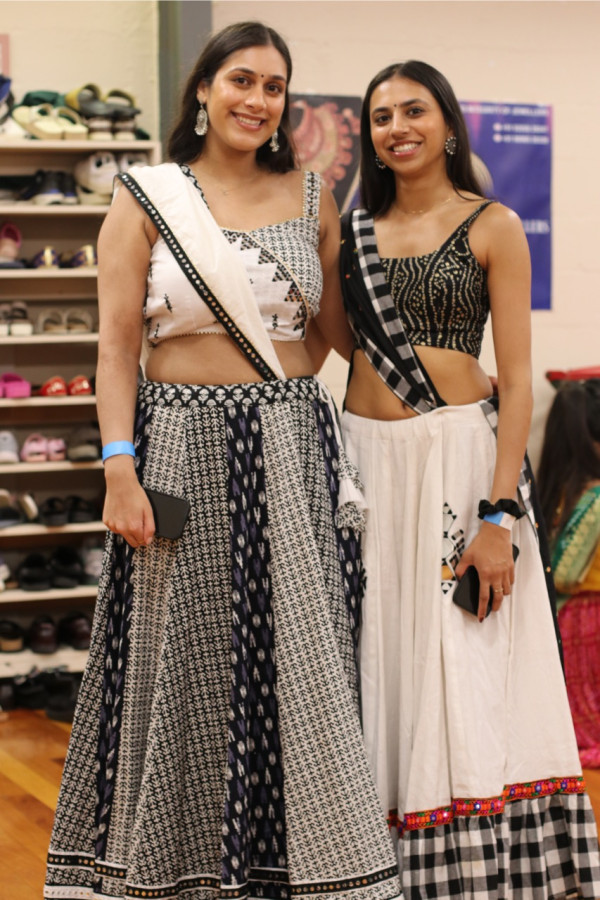
Image: Re: News.
Smita Alipuria and Amisha Damania are 24-year-old cousins who are both wearing outfits purchased online from Navsari, Gujarat.
Smita was born in New Zealand and her family comes from a Gujarti village called Alipor.
She’s wearing a traditional cotton Navaratri outfit which costs around $100.
Smita says celebrating Navaratri is big in her household and she comes to garba most years.
“My dad does fasting for the full nine days, we do aarti (a prayer ritual) everyday at home.”
Amisha says Smita is “basically my sister, we've grown up together” and the outfit she wore to match Smita was one she borrowed from her aunty.
“It's cotton, it's a chaniya choli (traditional Gujarati clothing), it's beautiful, it's flare-y and you can dance so easily.”
Hailey (left) and Anjali (right)
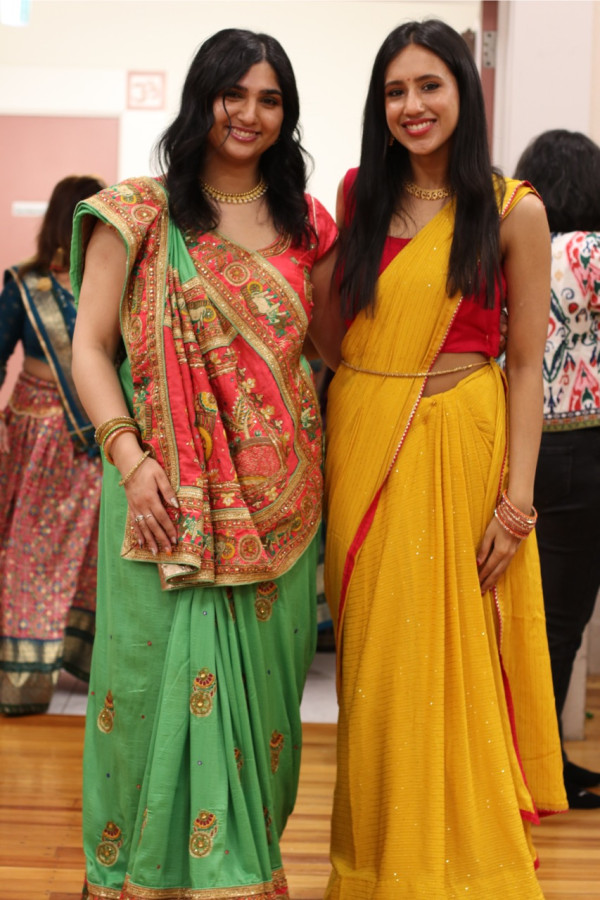
Image: Re: News.
Hailey Kapadia and Anjali Gupta are 24-year-old friends who were both born in Wellington.
Anjali says her grandfather moved to New Zealand in the 80s, so her dad grew up here, while her mum moved here from India after getting married.
She’s wearing a sari from Bengaluru, India which she estimates cost her $100, while her accessories cost around $20.
Anjali says the perks of wearing a sari are that you can mix and match different blouses and jewellery to create new combinations.
Hailey is a second generation Indian New Zealander and says she is excited to be back at garba after spending the last several years away at university.
She says she missed “the people, dressing up, just like being part of my culture again I reckon because I feel like I was away from it for so long”.
Hailey’s sari was a gift from her uncle and her jewellery is her mum’s.
“I don't really keep up with the trends just because I haven't been to Navaratri for like five years. I just feel like every time I get new things, they get outdated really quickly so I just don't really care anymore.”
More stories:
Paying tribute to one of Auckland's first Asian supermarkets, Lim Chhour
“It is a tribute to the migrant vendors who come to New Zealand, set up shop and they just hustled.”
Long hours, physical labour, sore backs: What it takes to make it into WOW
A designer and a performer tell us about the work they put into the World of Wearable Arts.
This 15-year-old is helping 150 kids train at the gym
FitTeens is a Pasifika-founded gym programme by and for teenagers.